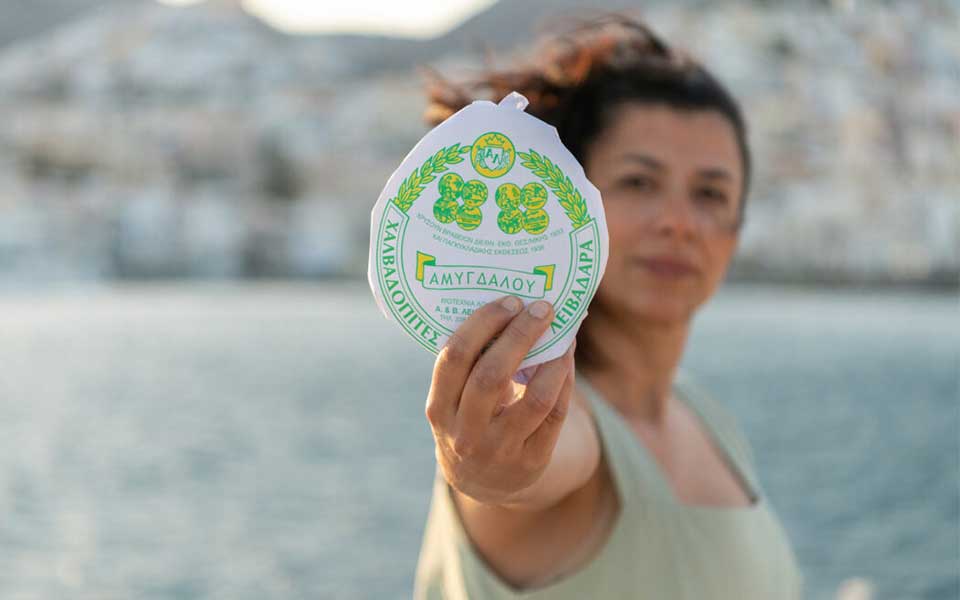Soon after the founding of Ermoupoli in 1822-1823, the traditional halvadopita (halva pie) came to Syros, packed in the suitcases of refugees following the destruction of the islands of Chios and Psara. The refugees that arrived from Chios were well-acquainted with the art of making lokum and halva; for many years they had made them at the Sublime Porte (Constantinople) for the Ottoman sultan and his harems.
Halva pie and lokum go hand in hand, but the latter gradually became very popular, even though halva pie is considered a more noble product, more intricate and rich, as it is produced with fine thyme honey, egg whites, sugar and soapwort root.
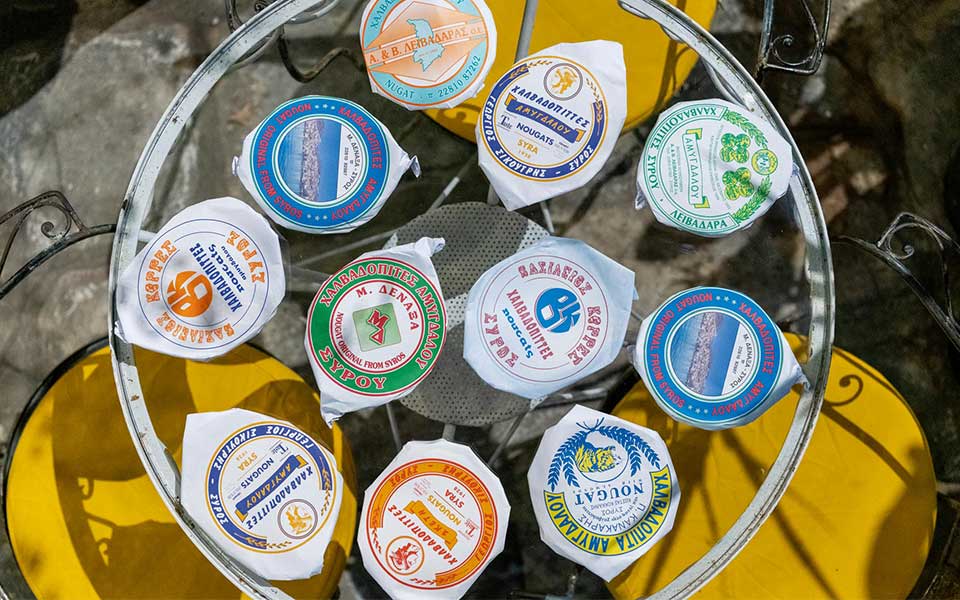
© Alexandros Petrakis
A dessert from the 19th century
In the relevant bulletin submitted to the National Inventory of Intangible Cultural Heritage in 2019, it is stated: “In the registers of the Historical Archive of the Municipality of Ermoupoli, Giorgios Arfanis from Ephesus is recorded as the first confectioner/lokum maker.”
The first official seal of a lokum maker in Ermoupoli appeared in 1837, that of Nikolaos Stamatelakis, from Istanbul, of Chiot origin. These lokum makers would also produce halva pies, and, by 1870, the census of the Municipality of Ermoupoli recorded 55 professionals who packaged their products and sealed them with logos featuring the coat of arms or portraits of kings, as well as symbols such as the eagle, lion, tiger, Hermes’ head, bee, crown, and others. The logos were printed at Freres printing house, founded in 1872, and exports were already underway.
The second wave of refugees that followed the destruction of Smyrna in 1922 brought pastry chefs and lokum makers to Syros from Asia Minor, who initially found employment in the workshops of the descendants of the first wave of refugees, gradually opening their own workshops. They participated in and were awarded at international trade fairs in the late 19th century and the early 20th century. “Until 1945, there were 128 pastry chefs recorded in Ermoupoli, the overwhelming majority of whom were of refugee origin and produced, among other things, halva pies and lokum,” according to the registry.
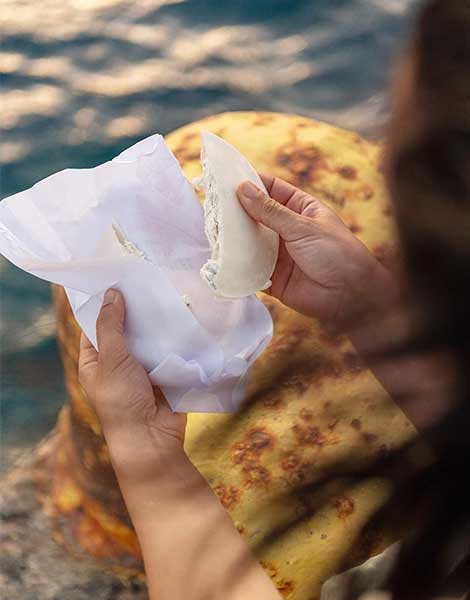
© Alexandros Petrakis
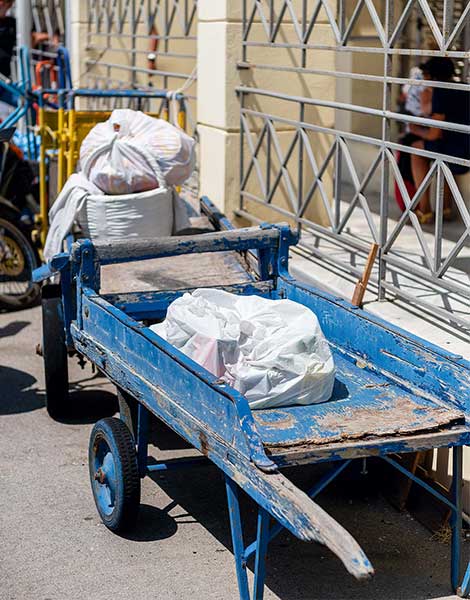
© Alexandros Petrakis
Trademark of Syros
Since then, halva pies have not stopped being produced in Syros. “Wars, earthquakes, floods notwithstanding, there was always a pot bubbling away on the island,” says lokum maker Ms. Dina Sykoutri. Today, halva pies and lokum are considered an indispensable souvenir for every person visiting the capital of the Cyclades.
A vivid picture, still very much alive, can be seen in the sellers carrying baskets laden with their delicacies, who chase the ferries to sell their lokum and halve pies for the short time the ships remain in the harbor. During its peak years, the craft of making halva pies and lokum spread without criteria of origin or social class.
Today, out of the dozens of lokum and halva pie makers of the past, only six remain: Livadaras, Korres, Denaxas, Sykoutris, Kanakaris and the small Georgiou workshop. All of them are old traditional craftsmen who continue to make halva pies, each with their own recipe. Some are thicker, others thinner, such as those by Kanakaris, which include a touch of mastic; some are filled with almonds like those of Korres, others are lighter and more airy like Denaxas’, or chewier and chewable like those made by Livadaras, or sometimes denser and more chewy like Sykoutris’.
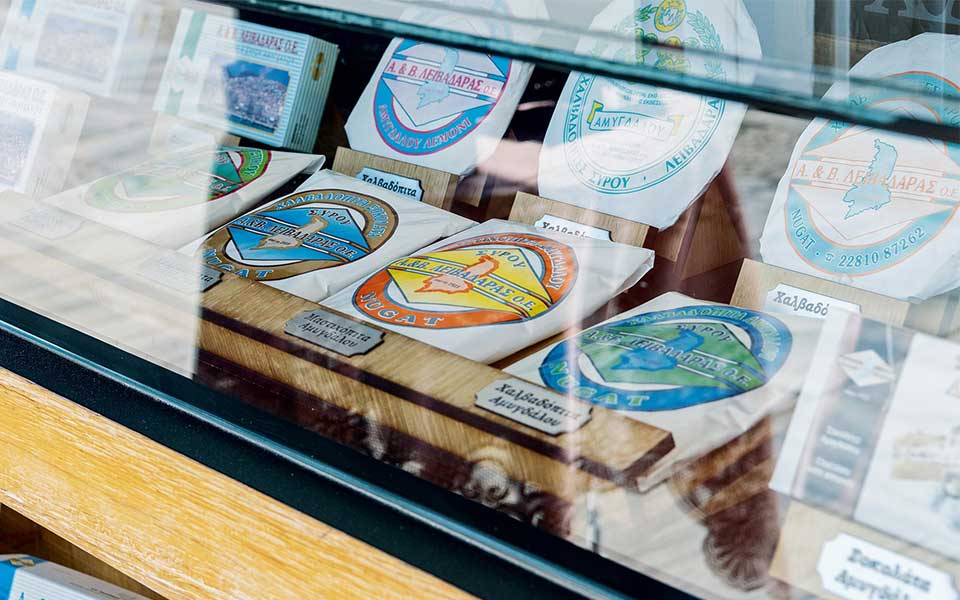
© Alexandros Petrakis
Halvadoriza and Sacramental Bread
The proportions of the ingredients may vary, but according to the traditional technique of halva pie making from Asia Minor, a very particular and special ingredient is halvadoriza (halva root). Although it does not add any aroma or flavor, it is essential for the dessert’s success. Halvadoriza is grown in the Caucasus, also known as “tsoueni” or soapwort root. It is also used in laundries, where, as described by Ms. Dina Sykoutri, it is used to clean collar stains. Although the word “root” is included in its compound name, in reality it is the extremely hard branches of the plant that are primarily used, which require an adze or even a ribbon saw to cut.
Halvadoriza is procured dried, soaked overnight in water, and then boiled the next day in a copper pot to produce an infusion. This infusion, along with egg whites, is used to make the meringue filling of the halva pie. Halvadoriza serves as a natural preservative and adds volume to the filling.
The last but very important component of the halva pie is the vafla, the thin white casing that contains the filling. It is essentially unleavened dough, a large round disc (similar to the sacramental bread used in the Catholic Eucharist), made from starch, water, and salt.
This article was previously published in Greek at gastronomos.gr.

